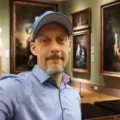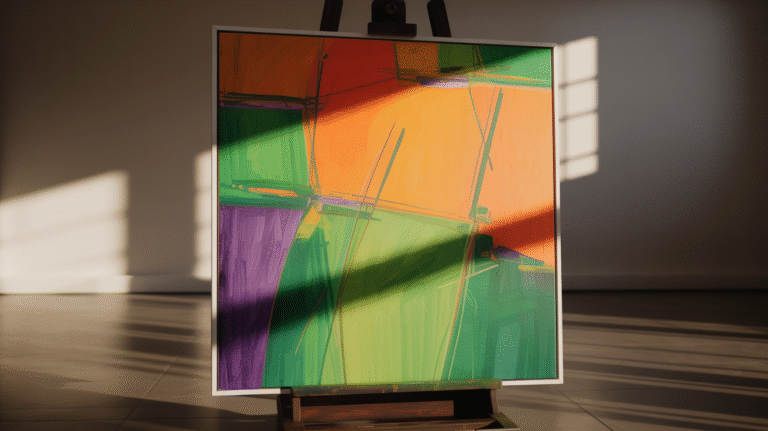Art is a fundamental aspect of humanity, deeply embedded in our lives. From ancient cave paintings to modern masterpieces, art has always served as a means of communication, connection, and sharing experiences. The process of creating art allows us to express feelings, thoughts, and emotions tangibly. By engaging in artistic activities, we can explore our innermost thoughts and emotions, thus providing a medium for self-discovery and growth.
Additionally, making art can have a positive impact on your mental wellbeing, as the creative process can be both meditative and therapeutic.
The Essence of Art Making

Exploring Creativity
Art making allows you to dive into the world of creativity. By experimenting with colors, forms, and ideas, you can push your boundaries and discover new ways of expressing yourself.
Expressing Emotions
Art serves as a powerful medium to communicate and share personal experiences, thoughts, and feelings. Whether it’s a painting, sculpture, or any other form, art allows you to connect with others on a deeper level by giving them a glimpse into your emotional world.
This can be therapeutic and may even help you in understanding and processing your own emotions more effectively.
Benefits of Creating Art
Therapeutic Healing
Creating art can be a highly therapeutic process. Immersing yourself in art can help distract your thoughts from illness or personal problems, improving your overall well-being by decreasing negative emotions and increasing positive ones.
In challenging moments, art helps me cope with stress and gives me a positive feeling.
Boosting Self-Esteem
The act of creating something unique and communicating your inner thoughts fosters a sense of accomplishment, increasing your confidence in personal abilities and skills.
Improving Motor Skills
Engaging in various forms of art, such as painting, drawing, and sculpting, improves manual dexterity and hand-eye coordination. Personally, by participating in practical activities, I was able to improve my motor skills and transfer them to other areas of life.
Visual Communication and Expression
Storytelling Through Art
From the earliest cave paintings to modern digital art, humans have used art as a way to tell stories. By creating visual representations, you can share narratives and experiences that might be hard to put into words.
When you make art, you have the opportunity to take your audience on an emotional journey, allowing them to connect with your work on a deeper level. This connection fosters empathy and helps me understand each other’s experiences better.
Sharing Perspectives
Making art also enables you to share your unique perspective on the world. Artwork can capture moments, evoke emotions, and inspire others to see the world through your eyes. Additionally, art often provides a platform for exploring social issues, challenging norms, and inspiring change.
Promoting Awareness
Art is a powerful medium to create awareness and start conversations on important social issues. As an artist, your creations have the potential to engage, inform, and inspire people, often weaving messages into captivating visuals or emotional narratives.
Art allows me to educate and inform audiences about issues that matter to you. Art creates deep human connections and provides a platform for meaningful discussion.
Stimulating Change
Art has a unique ability to evoke emotions, provoke thought, and inspire action. As an artist, you play an integral part in fostering social change through your creations. Combining your artistic skills with a desire for real-world impact creates a powerful catalyst for change.
Art in Education

Enhancing Academic Performance
Art education has a significant impact on students’ academic performance. Research shows that being involved in the arts can actually strengthen academic performance in other subjects.
It also increases your cultural awareness, helping you better understand and appreciate diverse perspectives and global cultures. Moreover, schools with robust arts programs have found that students tend to be more focused, motivated, and less stressed.
I experienced the positive learning environment with my classmates during my school days. Consequently, this boosted my academic and social achievements.
Preservation of Cultures and History
As a creator, one compelling reason to make art is the preservation of cultures and history. Art acts as a powerful tool in safeguarding cultural identity amidst the whirlwind of globalization and modernization. By engaging in artistic activities, you can contribute to protecting cultural heritage.
Art tells a story and brings alive the richness of cultures. Through various art forms, such as painting, dance, music, or literature, you can express and share your own unique cultural background. When different individuals create art influenced by their respective heritages, it leads to a beautiful tapestry of diverse perspectives, strengthening the understanding and appreciation of various cultures.
The Business of Art

Career Opportunities in Art
Art is not only a form of self-expression, but it can also lead to exciting career opportunities. You can pursue several artistic fields, from fine arts like painting and sculpture to digital media or even performance arts. As an artist, your skills can open doors to positions like graphic designer, illustrator, art director, or animator, to name a few. Additionally, you may find opportunities in museums, galleries, or even teaching art to others. The variety of career paths available can allow you to explore your creativity while making a living doing what you love.
Economic Contribution
The business of art also has a significant impact on the economy. Artists and their creations contribute to economic growth by generating revenue through sales, licensing, and other commercial activities. The art industry also supports the local economy by attracting tourism and promoting cultural exchange. By engaging with why we make art, you are not only enriching your life but also participating in an essential sector that creates jobs and adds value to the economy.
Futuristic Directive for Art
As an artist, it’s essential to keep evolving and embracing new concepts and ideas. One such approach is incorporating the influence of Futurism in your artwork.
Futurism is an art movement that aimed to capture the energy and dynamism of the modern world, with artists often fascinated by the latest developments in science, technology, and philosophy.
By adopting a futuristic directive for your art, you’ll find yourself exploring new realms and expanding your creative horizons. To start, consider taking inspiration from the foundations of Futurism. The movement sought to elevate the working classes, celebrate the young, and break free from the constraints of the past.
By incorporating these themes into your artwork, you’ll be able to capture the essence of Futurism while creating pieces that resonate with today’s audiences. Another key aspect of Futurism is its anticipation of future aesthetics and influences on various art movements
Adopt this approach in your work by choosing subjects and themes that resonate with a wide range of viewers while still staying true to the principles of Futurism.
In summary, adopting a futuristic directive for your art can open up new creative possibilities and help you develop a unique and recognizable style. By tapping into the themes, techniques, and trends of Futurism, you’ll create dynamic and compelling pieces that not only capture the imagination of your audience but also leave a lasting impression.
FAQ – Why Make Art
How art can change your live?
Art has the incredible power to transform lives in many ways. It’s not just about the aesthetic appeal or visual beauty – the impact art can have on your daily life goes far beyond that. From providing an escape from the everyday to inspiring you with creative ideas, art plays an essential role in shaping our perceptions of the world around us.
Why do people start art?
One of the fascinating aspects of art is its ability to reflect, transmit, and shape culture. As you immerse yourself in various artistic styles from different periods, you will notice that art often mirrors the cultural environment of its time. Additionally, art allows individuals to comment on their societies and express deeply rooted emotions, thoughts, and ideas. These elements make art a powerful tool for connecting and communicating with others.
Similarly, art can also serve a practical purpose: making our surroundings more visually appealing. You might have experienced this yourself, using art to decorate your home or workspace to create a more pleasant atmosphere. This desire to create beautiful spaces is just one way that art fulfills a fundamental need in our lives.
Is there always a purpose to art?
In pondering this question, it’s crucial to consider the diverse perspectives and opinions surrounding the purpose of art. For some individuals, art serves as a means of emotional expression, allowing them to capture and share their inner world with others. On the other hand, some artists aim to inspire change through their work, strengthening the will and pushing people to act in response to societal issues. But for others, the purpose of art may be more subtle or even personal, evoking unique responses and experiences for each viewer.
As you delve deeper into the world of art, you’ll likely develop your own interpretation of its purpose and meaning, shaped by the works that resonate with you. So, stay curious and open-minded as you explore the myriad ways art can impact your life and reveal the world around you.






